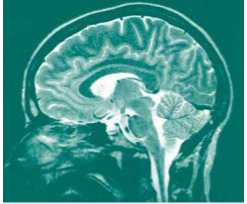
http://www.dbsasgv.org/wp-content/uploads/2017/11/EmrgTechsBro09.FINAL_.pdf
Treatment Technologies for Mood Disorders

Depression and Bipolar Support Alliance
We’ve been there. We can help.
Treatment Technologies
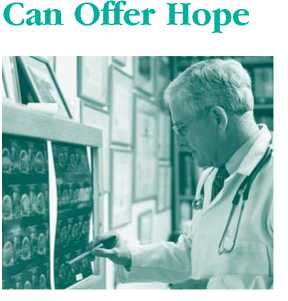
Treatment for depression and bipolar disorder usually includes four elements: talk therapy, medication, peer support, and a personal wellness plan. Sometimes, though, these standard treatments don’t help… or don’t help enough. As a result, researchers are turning to new technologies in search of more effective treatments. Their focus has mainly been on treating depression or bipolar depression, the depressive phase of bipolar disorder. Some of these new treatments have been approved for use in the United States, and some are still experimental. As with any form of treatment, technological alternatives undergo rigorous tests to determine their safety and effectiveness. And these alternatives, for people experiencing treatment challenges, offer newfound hope on the road to recovery.
Finding Balance in the Brain
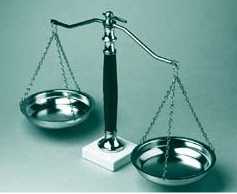
Scientists believe that depression and bipolar disorder are caused by an imbalance of brain chemicals called neurotransmitters. Some of these chemicals related to mood disorders are serotonin, dopamine, and norepinepherine. Most medications used to treat mood disorders work by restoring the balance in these chemicals.
Other treatments besides medication can help to restore this balance and reduce symptoms of depression or bipolar disorder. In the 1930s, scientists discovered that applying a small amount of electrical current to the brain caused seizures that changed brain chemistry. This technique became known as electroconvulsive therapy (ECT). ECT has been abused in the past, but it remains a very effective treatment for some people. Many of the new treatment technologies were developed to have the benefits of ECT but with greater convenience, less risk, and fewer side effects.
Different Types of Treatment Technologies
In Use as of November 2009
Electroconvulsive Therapy (ECT) Description: During ECT, a machine is used to send small electrical currents to the brain. These currents cause a seizure that lasts about 30 seconds. Treatment is usually repeated two or three times a week over a few weeks. ECT requires general anesthesia (being put to sleep for a few minutes), so it is done as an inpatient or day hospital procedure.
ECT still carries stigma from years past when it was administered without anesthesia. Modern ECT, however, is always given with anesthesia and muscle relaxants to prevent any pain or injury during the treatment. And doctors use very controlled and very specific, calculated “doses” of electrical currents and also monitor heart rate and blood pressure.
Side Effects/Risks: The most common side effects that people experience after ECT are confusion and memory loss. ECT remains a controversial treatment, because it has significant risks and because it has been misused in the past. The relapse rate is a concern, but ECT is probably the most effective treatment for very severe depression that hasn’t responded to other treatments.
FDA Approval: Because ECT was developed so long ago, it has not been officially reviewed through the FDA’s standard process.
Transcranial Magnetic Stimulation (TMS)
Description: During TMS, a special electromagnetic device is placed on the scalp in order to send magnetic field pulses to parts of the brain that help regulate mood. The magnetic field pulses create a small electric current inside the brain, leading to changes in the chemicals (or neurotransmitters) that affect mood.
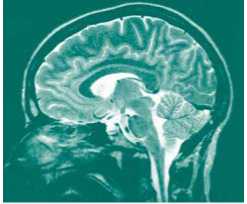
TMS doesn’t involve injections or incisions of any kind. It can be performed in a physician’s office and doesn’t require sedation or anesthesia. A TMS treatment session lasts 30 to 40 minutes and is administered five times a week for four to six weeks. A typical treatment course lasts 20-30 sessions.
Studies on TMS as a treatment for mental illness began in 1995. Clinical trials conducted at 23 research institutions worldwide have shown it to be safe and effective.
Side Effects/Risks: The most common side effect that people report is mild to moderate scalp pain or discomfort during the TMS session. There may be a small risk of seizure associated with TMS, but no seizures have been reported during its clinical use in the United States. And TMS doesn’t have the side effects that accompany some psychiatric medications (for example, weight gain, dry mouth, sleepiness, trouble with memory or concentration).
FDA Approval: In October 2008, the FDA approved the NeuroStar® TMS device to treat major depression in adults who haven’t improved after one antidepressant medication at an adequate dose and duration. It isn’t approved as a first-line, or initial, treatment for depression, and it isn’t approved for depression that hasn’t responded to several treatments at an adequate dose and duration.
Vagus Nerve Stimulation (VNS)
Description: To make VNS treatment possible, a small pulse generator is inserted into the left side of the chest. A wire or electrode is also inserted that connects to the vagus nerve in the neck. This requires minor surgery that is typically outpatient. The generator is programmed by a doctor to send small electrical pulses to the vagus nerve. The vagus nerve is one of the main communication pathways between the brain and other organs. It runs along the left and right sides of the body. It delivers these small electrical pulses directly to parts of the brain where there are neurotransmitters associated with depression.
Side Effects/Risks: The most common VNS side effects are mild to moderate and include the following: temporary hoarseness or a slight change in voice tone, increased coughing, a feeling of shortness of breath, or a tickle in the throat. These usually become less noticeable over time. And doctors can often adjust the amount of electrical current to avoid or reduce side effects that are troublesome.
FDA Approval: Approved in 1997 to treat epilepsy, the FDA approved VNS therapy as a treatment for depression in July 2005. VNS can be used to treat people 18 years of age or older who are experiencing chronic (two or more years) or recurrent, treatment-resistant depression (TRD). It was the first treatment approved for TRD, depression that hasn’t improved after four treatment attempts.
Under Research as of November 2009
Deep Brain Stimulation (DBS)
Description: DBS is a very experimental treatment that uses electrical impulses to activate areas of the brain related to mood. A device called a neurostimulator is inserted into the upper chest in minor surgery similar to what’s done for VNS. And like VNS, deep brain stimulation serves as a sort of “pacemaker.” But unlike VNS, it’s one of the most invasive treatments, because it involves brain surgery to implant electrodes that receive the electrical impulses the neurostimulator sends. These electrodes stimulate very “deep” parts of the brain that other treatments can’t reach.

Side Effects/Risks: Any surgery involves risks, but brain surgery in particular poses some serious risks which might include the following: bleeding in the brain, stroke, and breathing and heart problems. After surgery, side effects might include movement disorders, seizures, mood changes like mania or depression, and complications with the neurostimulator device. At this time, researchers don’t know the long-term effects of DBS on these “deep” regions of the brain.
FDA Status: While still under research and not yet approved to treat depression or bipolar disorder, DBS has the FDAs approval to treat other illnesses such as Parkinson’s disease.
Magnetic Seizure Therapy (MST)
Description: Conducted under anesthesia, MST uses powerful magnetic fields to activate parts of the brain associated with mood. Similar to ECT, the magnetic fields cause a seizure that lasts about 30 seconds. But MST has an advantage over ECT. Unlike ECT’s electric currents, the magnetic fields can be focused on specific parts of the brain. MST seems to have the same positive results as ECT but without the negative, disabling effects on memory and concentration. If this proves to be the case, MST could be a highly effective alternative for those with treatment-resistant depression.
Side Effects/Risks: The side effects of magnetic stimulation therapy are similar to those of ECT. But so far, research shows that, after the treatment, people experience shorter recovery times and less confusion than they would with ECT.
FDA Status: MST is still under research for treatment-resistant depression. It is not yet approved by the FDA.
Transcranial Direct Current Stimulation (tDCS)
Description: TDCS uses a small battery-operated device to send small amounts of electricity to soft, wet sponges placed on the forehead. The small sponges act as electrodes. They pass electric current over a region of the brain related to depression. The current creates an electromagnetic field in the brain which researchers hope will help improve depression symptoms.
Side Effects/Risks: Research shows that tDCS seems to have only mild, short-term side effects: itching, redness, and mild headache (lasting less than an hour). Rare side effects include nausea, vertigo, and difficulty concentrating.
FDA Status: The FDA has not yet approved tDCS. It’s still being studied as a treatment for several conditions including fibromyalgia, stroke, and depression.
Clinical Trials
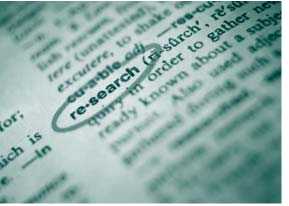
Clinical trials (research studies) are underway at many institutions throughout the United States and the world. These trials investigate new forms of treatment (like the ones just described) to see what other effective and safe options there might be to treat bipolar disorder and depression. Participating in one of these studies requires careful consideration and discussion with your health care provider. To learn more about clinical trials, visit www.DBSAlliance.org/ClinicalTrials, or contact one of the resources listed at the end of this brochure.
Questions to Ask Your Doctor
■ What might the side effects of my treatment be? How can I cope with them?
■ What are the risks associated with my treatment?
■ How will this treatment affect the treatments I’m receiving for other illnesses?
■ How can I recognize problems if they happen?
■ How can I reach you in an emergency?
■ When will I start to feel some improvement?
■ Will my insurance cover this treatment?
■ What can I do to improve my response to this treatment?
Finding Hope and Forging Ahead

After years and years—even decades—of research, treatment technologies like ECT, TMS, and VNS are no longer experimental endeavors. They are revolutionary realities.. .and newfound hope for people who battle mood disorders. Every day, all over the world, researchers are forging ahead, searching for ways to bring more hope to more people. There is still much to explore in the body and brain. As research continues, we’ll understand more and more about the brain and illnesses like depression and bipolar disorder. As time goes on, maybe this new understanding will help us design a better map for those who feel like they are lost in the struggles of life with a mood disorder. And maybe this map will be one of the tools that helps them find their way on the road to recovery.
Additional Information & Resources
Research & Clinical Trials
Mental Health Clinical Trials: FAQs
www.PsychCentral.com/ClinicalTrials
“How to Be a Wise Consumer of Psychological Research”
www . PsychologyMatters. org/WiseConsumer. html American Psychological Association (APA)
750 First Street, NE Washington, DC 20002-4242 (800) 374-2721
Juvenile Bipolar Research Foundation
www. bpChildResearch. org 550 Ridgewood Road Maplewood, NJ 07040 (866) 333-JBRF
Mental Health Clinical Trials
www.NIMH.NIH.gov/Health/Trials
National Institute of Mental Health (NIMH) 6001 Executive Boulevard, Rm. 8184, MSC 9663 Bethesda, MD 20892-9663 (866) 615-6464
NARSAD
www. narsad. org
60 Cutter Mill Road, Suite 404 Great Neck, NY 11021 (516) 829-0091
Stanley Medical Research Institute
www. StanleyResearch. org
8401 Connecticut Avenue, Suite 200 Chevy Chase, MD 20815 (301) 571-0760
Inside the Brain
“The Secret Life of the Brain”
www.PBS. org/Brain
“A Brain Primer”
www.McManWeb.com/Brain_Primer.html
McMan’s Depression and Bipolar Web
“Our Favorite Neurotransmitters”
www.McManWeb. com/Neurotransmitters. html
McMan’s Depression and Bipolar Web
DBSA 7/M
We’ve been there. We can help.
Depression and Bipolar Support Alliance
The Depression and Bipolar Support Alliance (DBSA) is the leading patient-directed national organization focusing on the most prevalent mental illnesses. The organization fosters an environment of understanding about the impact and management of these life-threatening illnesses by providing up-to-date, scientifically-based tools and information written in language the general public can understand. DBSA supports research to promote more timely diagnosis, develop more effective and tolerable treatments, and discover a cure. The organization works to ensure that people living with mood disorders are treated equitably.
Assisted by a Scientific Advisory Board comprised of the leading researchers and clinicians in the field of mood disorders, DBSA has more than 1,000 peer-run support groups across the country. Nearly five million people request and receive information and assistance each year. DBSA’s mission is to improve the lives of people living with mood disorders.
Depression and Bipolar Support Alliance
730 N. Franklin Street, Suite 501 Chicago, Illinois 60654-7225 USA Phone: (800) 826-3632 or (312) 642-0049 Fax: (312) 642-7243 Website: www. DBSAlliance. org
Production of this brochure made possible by an unrestricted educational grant from Neuronetics, Inc.
This brochure’s original version was reviewed by Robert N. Golden, MD, vice dean of the University of North Carolina School of Medicine and Ken Heideman of DBSA Boston. This revision was reviewed by DBSA Director of Scientific Affairs Allen Daniels, EdD; Gregory Simon, MD, MPH, chair of the DBSA Scientific Advisory Board and investigator for the Center for Health Studies with Group Health Cooperative in Seattle, WA; and Audrey Tyrka, MD, PhD, assistant professor in the Department of Psychiatry and Human Behavior at Brown Medical School and associate chief of the Mood Disorders Program at Butler Hospital in Providence, RI.
DBSA does not endorse or recommend the use of any specific treatment, medication, or resource for mood disorders mentioned in this brochure. For advice about specific treatments or medications, individuals should consult their physicians and/or mental health professionals. This brochure is not intended to take the place of a visit to a qualified health care provider.
©2009 Depression and Bipolar Support Alliance TECH1109
Models used for illustrative purposes only
